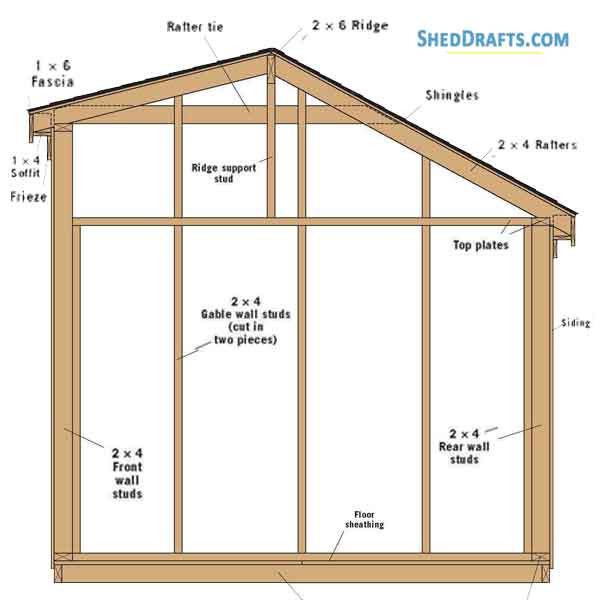Thursday, November 7, 2024
How to build a 8x12 shed and stay within your budget

Alright, let's talk sheds. You've got a vision, a dream of a space where you can finally organize your tools, store your lawnmower, maybe even create a little workshop. But the price tag of a pre-built shed? Yikes! That's where DIY comes in, and let's be honest, building your own shed is way more satisfying anyway.
First Things First: The Plan
The first thing you gotta do is nail down the blueprint. An 8x12 shed is a solid choice, big enough for a bunch of stuff but not so huge it'll break the bank. You'll find tons of free plans online, or you can splurge on some professionally drawn ones. Think about what you're gonna use the shed for:
Tools & Equipment: Make sure there's enough room for your workbench, shelves, and all your gadgets.
Storage: Will you be storing bikes, lawn furniture, seasonal decorations? Think about height and space.
Workshop: Do you need a window for natural light? Electricity? Maybe even a small heater for those chilly days?
Once you've got your plan, it's time for a trip to the hardware store.
Materials: Sticking to the Budget
This is where you gotta be smart. You can get away with spending less if you're willing to be a little resourceful:
Lumber: Pressure-treated lumber is a must for the foundation and floor, but for the walls and roof, you can save by going with regular construction-grade lumber. Just make sure it's kiln-dried for stability.
Roofing: Shingles, metal, even recycled plastic â€" there are options for every budget. Think about your local building codes and consider the weather in your area.
Windows & Doors: You can find decent, budget-friendly doors at most hardware stores. Windows, you can often find good deals on used windows or even build your own with plexiglass. If you're handy, you can even make a simple sliding door from reclaimed barn wood.
Insulation: Insulation isn't a necessity, but it'll make the shed more comfortable and energy-efficient. Look for deals on fiberglass insulation or consider using recycled materials like denim or newspapers.
Tools: You Don't Need a Full Arsenal
Let's be real, buying every tool you might need for this project would be a wallet killer. Borrow what you can, rent tools you'll only use once, and consider these must-haves:
Measuring Tape & Level: Essential for accuracy.
Circular Saw: For cutting lumber.
Drill/Driver: With a variety of bits.
Hammer: You'll be using this a lot.
Safety Glasses & Gloves: Protect yourself, you'll thank me later.
The Foundation: Setting the Stage
The foundation is the base of your shed, so it needs to be solid. You've got a couple of options:
Concrete Slab: The most durable, but also the priciest. If you're hiring a professional, this is your best bet.
Concrete Block: A good compromise between cost and durability. You can DIY this with a little bit of help.
Pressure-Treated Skirts: The most budget-friendly option, but requires careful preparation and level ground.
Framing: The Backbone of Your Shed
Framing is where your shed takes shape. Follow your blueprint, and don't be afraid to ask for help from a friend who's got some carpentry skills.
Walls: Start by assembling wall panels on the ground, then stand them up and secure them to the foundation.
Roof: The roof design is crucial. Choose a simple gable roof or a hip roof for more protection.
Doors & Windows: Cut out the openings for your doors and windows, making sure they're level and properly sized.
Sheathing & Siding: Enclosing Your Space
Now it's time to make your shed weatherproof. There's a lot of room for creativity here, but remember to keep your budget in mind.
Sheathing: Plywood or OSB panels provide structural strength and a base for your siding.
Siding: From traditional wood to budget-friendly vinyl or fiber cement, you've got options. Consider the style of your house and the overall look you want.
Roofing: Putting the Finishing Touches
The roof is your final layer of protection. Choose a material that fits your climate and budget:
Shingles: The most common and affordable choice.
Metal: Durable and long-lasting, but more expensive.
Recycled Plastic: Environmentally friendly and can be surprisingly stylish.
Interior Finishes: Making it Your Own
This is where you add your personal touch. Think about how you'll use the shed:
Flooring: Concrete is a classic choice, but you can also add plywood or even vinyl planks for a more comfortable feel.
Walls: Paint them a bright color, add wainscoting, or even cover them in shiplap for a rustic look.
Storage: Build shelves, install a workbench, or even add a small closet.
Electrical: Adding Convenience
If you want electricity in your shed, you'll need to call in a licensed electrician. They can run a line from your house or install a separate meter.
Building Your Dream Shed: A Journey, Not a Destination
Building your own shed isn't a quick project, it's a journey. There'll be moments of frustration, but also moments of satisfaction as you watch your dream take shape. Remember to take breaks, enjoy the process, and don't be afraid to ask for help. You've got this!
And hey, if you're feeling extra ambitious, you can even add some extra features like a deck, a porch, or even a small greenhouse. The possibilities are endless!